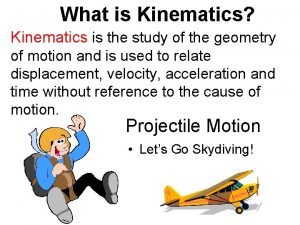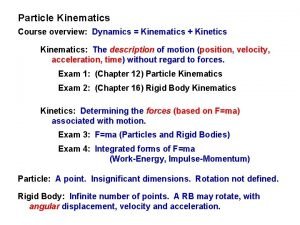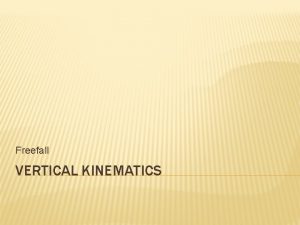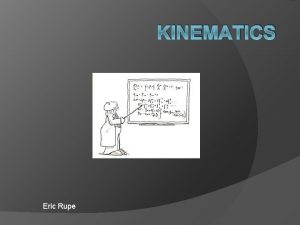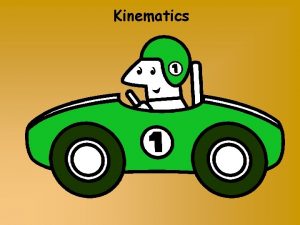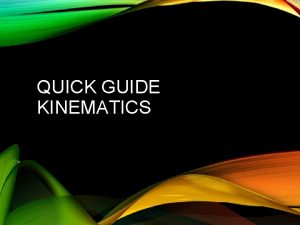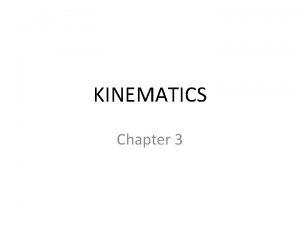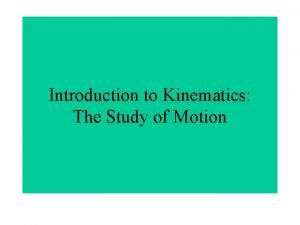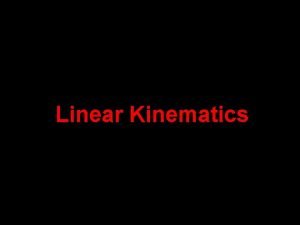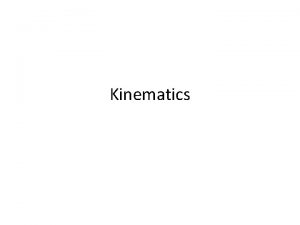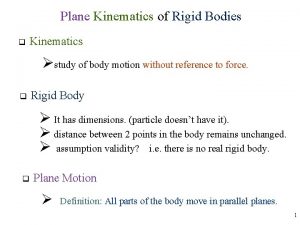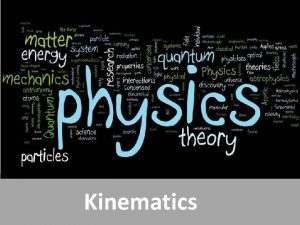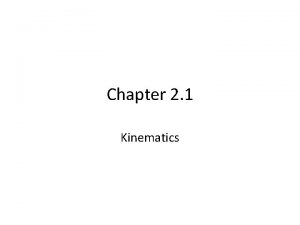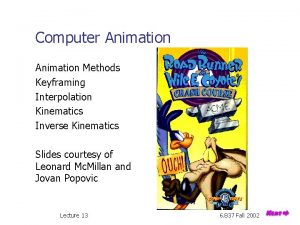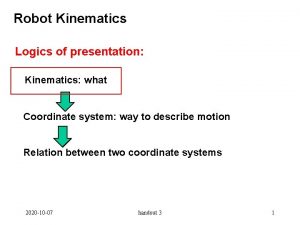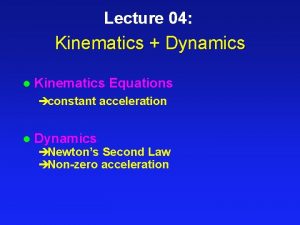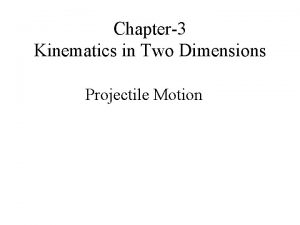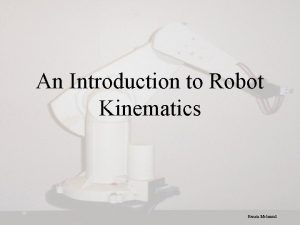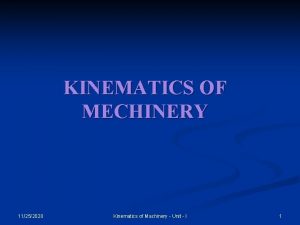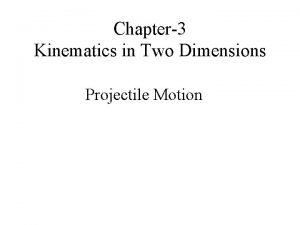What is Kinematics Kinematics is the study of
























- Slides: 24

What is Kinematics? Kinematics is the study of the geometry of motion and is used to relate displacement, velocity, acceleration and time without reference to the cause of motion. Projectile Motion • Let’s Go Skydiving!

Speed is the distance traveled per unit time. Velocity is an object's speed and direction of motion. Acceleration is a change in velocity over a certain period of time.

Gravity tends to pull all objects toward the center of the earth. Gravitational Acceleration is the constant describing the acceleration of any object falling toward the earth. -9. 8 m/sec 2 -32 ft/sec 2

0 Seconds Acceleration: 32 ft/sec Velocity: 0 ft/sec

1 Second Acceleration: 32 ft/sec Velocity: 32 ft/sec

2 Seconds Acceleration: 32 ft/sec Velocity: 64 ft/sec

3 Seconds Acceleration: 32 ft/sec Velocity: 96 ft/sec

4 Seconds Acceleration: 32 ft/sec Velocity: 128 ft/sec

5 Seconds Acceleration: 32 ft/sec Velocity: 160 ft/sec

6 Seconds Acceleration: 32 ft/sec Velocity: 192 ft/sec



A projectile is any moving object upon which the only active force is gravity. Gravity pulls all projectiles toward the center of the earth at the same rate.

Firing Angle (θ) is measured in degrees. It is the angle at which the projectile left the cannon. Initial Velocity (Vi) is the angular speed of a projectile at the start of its flight.

4 Seconds 0 ft/sec 3 Seconds 32 ft/sec 5 Seconds 32 ft/sec 2 Seconds 64 ft/sec 6 Seconds 64 ft/sec 1 Second 96 ft/sec 7 Seconds 96 ft/sec 128 ft/sec 8 Seconds 128 ft/sec 0 Seconds Initial Velocity (Vi)

4 Sec. 3 Sec. 2 Sec. 1 Sec. 0 Sec. Constant Horizontal Velocity

Constant Horizontal Velocity 4 Sec. 3 Sec. 2 Sec. 1 Sec. 0 Sec. Gravitational Acceleration 32 ft/sec 2

Projectile Motion – Motion in a plane Motion in 2 directions: Horizontal and Vertical Horizontal motion is INDEPENDENT of vertical motion. Path is always parabolic in shape and is called a Trajectory. Graph of the Trajectory starts at the origin.

Projectile Motion Formulas Going one step further: There is a right triangle relationship between the velocity vectors – Use Right Triangle Trigonometry to solve for each of them.

Projectile Motion Formulas

Projectile Motion Formulas



 Aplusphysics kinematics-horizontal kinematics
Aplusphysics kinematics-horizontal kinematics Kinematics is the study of
Kinematics is the study of Sự nuôi và dạy con của hổ
Sự nuôi và dạy con của hổ đại từ thay thế
đại từ thay thế Thế nào là hệ số cao nhất
Thế nào là hệ số cao nhất Diễn thế sinh thái là
Diễn thế sinh thái là Vẽ hình chiếu vuông góc của vật thể sau
Vẽ hình chiếu vuông góc của vật thể sau 101012 bằng
101012 bằng Thế nào là mạng điện lắp đặt kiểu nổi
Thế nào là mạng điện lắp đặt kiểu nổi Cách giải mật thư tọa độ
Cách giải mật thư tọa độ Lời thề hippocrates
Lời thề hippocrates Tư thế worm breton
Tư thế worm breton Vẽ hình chiếu đứng bằng cạnh của vật thể
Vẽ hình chiếu đứng bằng cạnh của vật thể Quá trình desamine hóa có thể tạo ra
Quá trình desamine hóa có thể tạo ra Khi nào hổ con có thể sống độc lập
Khi nào hổ con có thể sống độc lập Các châu lục và đại dương trên thế giới
Các châu lục và đại dương trên thế giới Các loại đột biến cấu trúc nhiễm sắc thể
Các loại đột biến cấu trúc nhiễm sắc thể Biện pháp chống mỏi cơ
Biện pháp chống mỏi cơ Bổ thể
Bổ thể độ dài liên kết
độ dài liên kết Thiếu nhi thế giới liên hoan
Thiếu nhi thế giới liên hoan Tia chieu sa te
Tia chieu sa te Hát lên người ơi
Hát lên người ơi điện thế nghỉ
điện thế nghỉ

